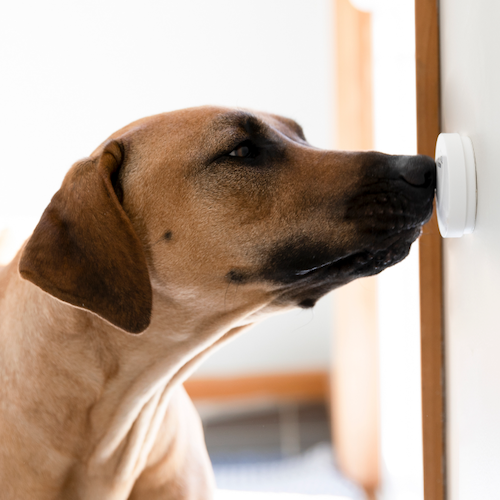Having any kind of pet comes with a price tag, but here are a few ways to keep your dog out of the vet’s office – or at least to keep the bills down if they do end up there.
1. Household Safety Whether you’re considering bringing a new pup into your home or you’ve had an energetic dog for years, there are a few common safety precautions to take in order to keep them healthy and out of harm. Dogs are prone to chewing or eating things that can land them in front of a vet, so be sure to pooch-proof both inside (wires, curtain cords, small items such as socks and children’s toys, medications) and outside (toxic plants including daffodils, household and automotive chemicals such as antifreeze).
2. Good Dental Hygiene Bad breath signals more than just bad manners. In dogs, it can be a sign of a number of health issues, from gum disease to problems in other parts of the body. Poor dental hygiene also can cause your dog discomfort, so regular brushing with special toothpaste is usually a good first step, but you might want to read up on dog dental care or consult a vet during a check-up.
3. Healthy Diet If you feed your dog cheap, low-quality food, you’re likely to pay for it down the line. We know that junk food isn’t good for us – it can cause obesity and related problems, hyperactivity and more – and nasty pet food can have similarly disastrous effects. Vets and pet experts say a higher-quality diet, however, can have a range of health benefits, from better breath to decreased joint pain in older animals. Advocates of raw dog food swear a more natural diet leads to better skin, fur, teeth and behavior, and fewer digestive and joint problems.
4. Ask Around At some point, your dog will need a trusted veterinarian, so ask around for recommendations. Find out who has the best “pet-side manner,” whether they’re likely to push expensive treatments or products and what kind of payment plans they offer.
5. Regular Check-ups It may seem counter-intuitive, but just like preventative health care for humans, taking your dog for a regular check-up can save money in the long run. For instance, making sure your dog has all the necessary vaccines and parasite treatments will help keep it happy and healthy, and decrease the likelihood that you have to return to the vet for more expensive (and possibly unpleasant) treatment later on.
6. Check Out Veterinary Schools Student vets, like student doctors, need to learn by observation and hands-on clinical work. Students are overseen and supported by highly knowledgeable, experienced veterinary experts, so your dog is likely to be in good hands if you take it to a veterinary college for treatment, but because these are learning environments, costs are often much lower.
7. Vouchers and Samples If your dog needs a certain kind of treatment, such as a hypo-allergenic shampoo, ask if the vet can provide free samples. Likewise, look online for vouchers: with a little searching, you may find deals on food, treats, equipment, services and other products for your pet.
8. Buy Online or Off-brand You may still need a prescription from a vet, but some pet medication can be bought online for substantially less, especially if you can find a product that’s exactly the same but doesn’t carry the brand-name price tag.
9. Ask For Discounts If you are a student, retired person, a member of the military or work in a public service role such as in the police or in health care, some veterinary services may be available at reduced rates.
*See Link to Original Article by Laura Potts:
http://www.dogstardaily.com/blogs/laura-potts/how-save-veterinary-bills






